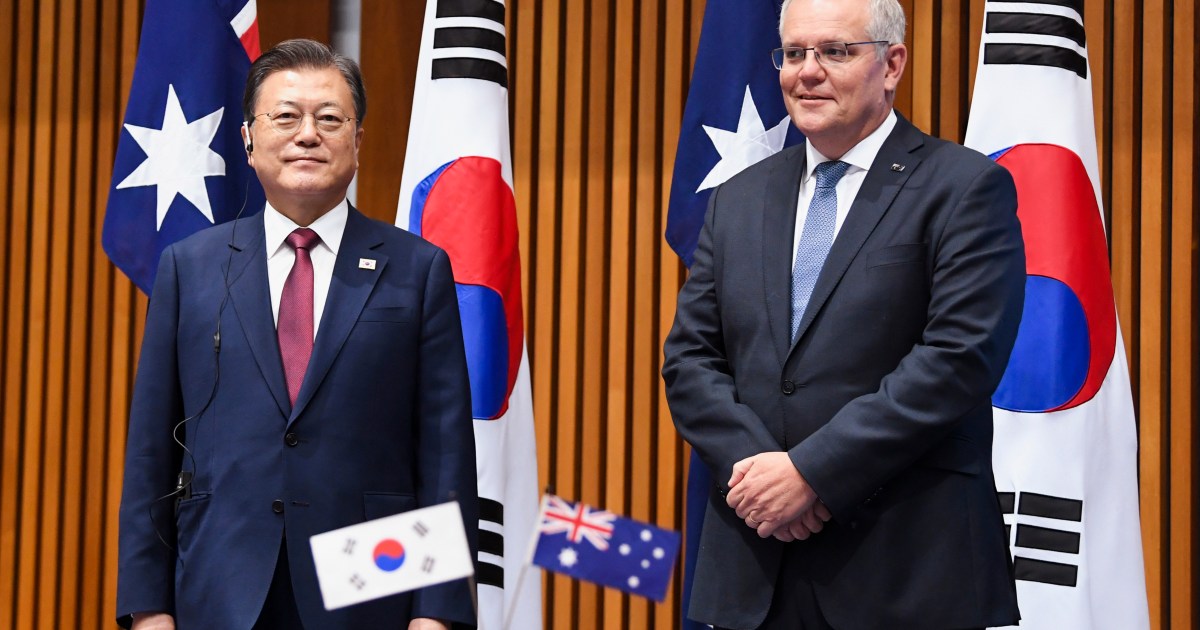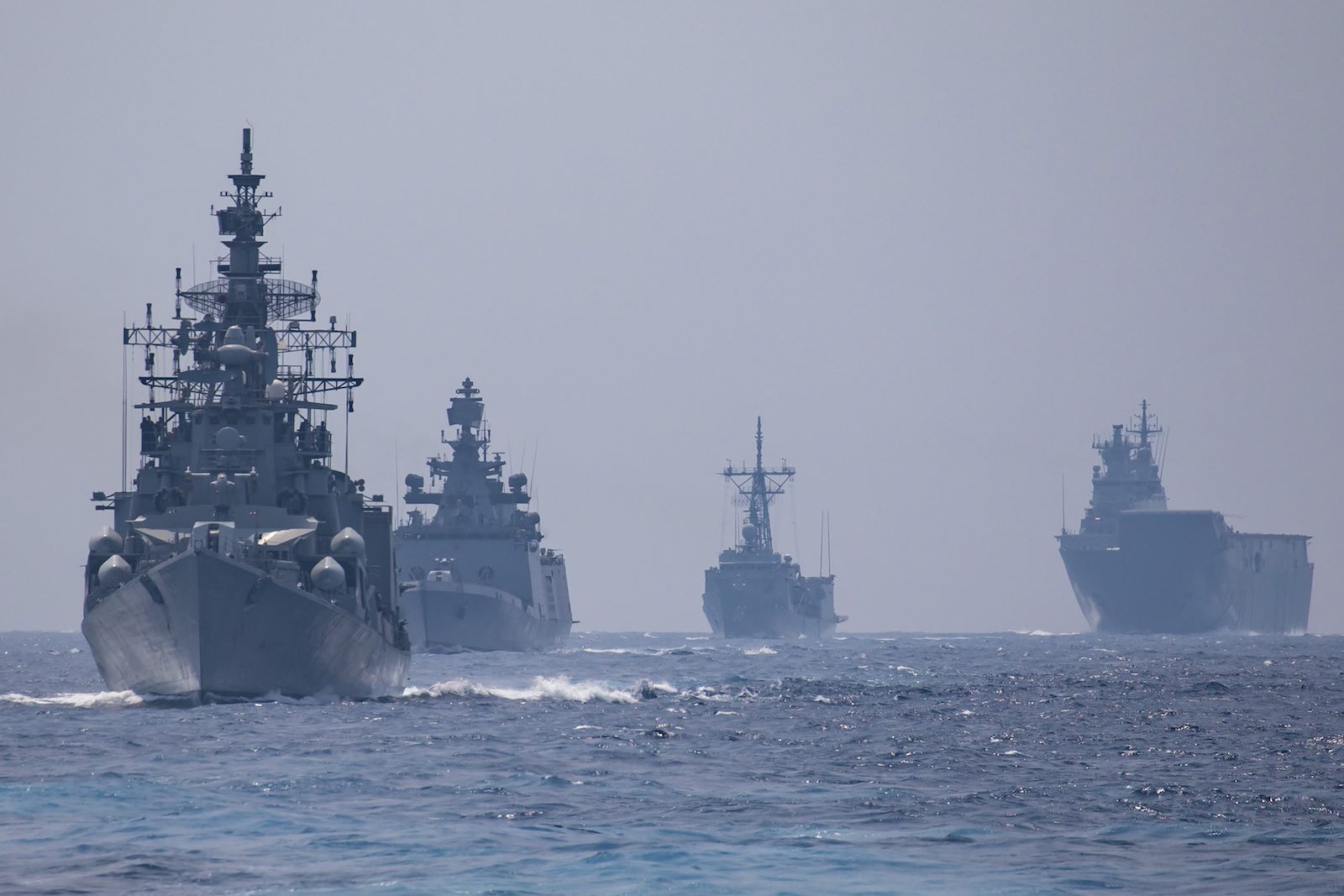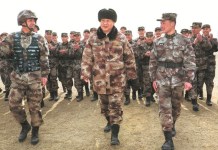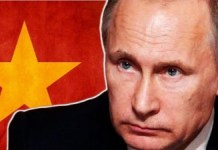South Korea has inked a $788 million contract with Australia to build a factory in Geelong, Victoria, which will manufacture 30 K-9 Thunder self-propelled howitzers, laying the ground for defense cooperation between the two countries.
The contract signing ceremony took place during a meeting between South Korean President Moon Jae-in and Australian Prime Minister Scott Morrison. Moon is the first foreign head of state to visit Australia since the pandemic.
Hanwha, a South Korean defense company, will provide the Australian army with artillery weapons, 15 units of K-10 armored ammunition resupply vehicles, and radars under the new defense contract.

The South Korean-made K-9 howitzer has now been ordered by Australia, making it the seventh country to do so. South Korea has exported around 600 units of the 155-millimeter K-9 artillery guns to India, Turkey, Poland, Norway, Finland, and Estonia.
Hanwha was selected as the sole preferred bidder for an Australian artillery gun purchase deal more than a year ago.
President Moon remarked that the two nations have decided to expand their defense cooperation and will collaborate more in the strategic defense industry, particularly with the signing of the K-9 howitzer deal.
Morrison praised South Korea’s willingness to transfer defense technology to Australia, saying it will help develop the country’s defense industry and create 300 jobs in the country.

South Korea’s Defense Program Acquisition Administration (DAPA) and Australia’s Capability Acquisition and Sustainment Group (CASG) inked a memorandum of understanding to deepen ties in the arms procurement sector ahead of the actual signing of the contract in Canberra during President Moon’s visit.
“Through the MOU and the K-9 howitzer export deal, both countries also agreed to promote the collaboration of different weapon systems based on the interoperability of the howitzers,” DAPA Chief Kang Eun-ho said in a statement.
Indo-Pacific Security In Mind
This deal is Australia’s largest defense contract with an Asian country. The announcement comes at a time when the major countries in the region are engaged in an arms race. Recently Australia joined a trilateral pact with the United States and the United Kingdom called AUKUS to develop nuclear-powered submarines, a decision that China has publicly criticized.
While Moon claimed that his visit had nothing to do with South Korea’s stance on Beijing although China did come up during the heads of states’ discussions. In 2016, Seoul had faced Beijing’s wrath in the form of economic sanctions after South Korea had hosted a US missile defense system.

The Australian prime minister emphasized the importance of a strong security environment to deal with Beijing’s economic and trade sanctions. “To ensure peace and stability, yes, you need a strong security environment where the rule of law is upheld and those who seek to live by that rule of law – which we would hope to be everybody – abide by it, and we uphold the institutions that make that possible.”
President Moon stated that while South Korea and Australia share similar values, the relationship with China is equally crucial. He stressed the importance of South Korea’s economic connection with China, as well as the need for cooperation on global issues such as climate change, pandemics, and supply chains.
President Moon, however, expressed his support for Australia’s choice to purchase nuclear-powered submarines as part of the AUKUS deal. He stated that AUKUS, along with the QUAD (Australia, the United States, Japan, and India), would help to maintain regional stability.
South Korea, according to Prime Minister Morrison, has a critical role to play in addressing tensions between China and Taiwan. “It does have its own unique standing within the region and its own relationships with each of the key principles that are engaged in that issue and we both share a very strong partnership and alliance with the United States and that provides an opportunity for dialogue,” he said.
K9 Thunder
The Indian version is called K-9 ‘Vajra’ and has been deployed at the disputed border with China amid more than a year-long standoff between the two armies.
The K-9 or any modern self-propelled artillery vehicle may somewhat resemble a tank however they are lightly-armored. They protect the crew against shrapnel and small arms and are usually included as armored fighting vehicles. Many are outfitted with machine guns to attack enemy infantry.
The K-9’s crew is guarded by an all-welded steel armor which is believed to endure 14.5 mm armor-piercing rounds, 152 mm shell fragments, and anti-personnel mines, and has overall nuclear, biological, and chemical protection.
The K9 has the ability to fire its shells in MRSI mode (Multiple Rounds Simultaneous Impact). In the MRSI mode, the K9 is able to fire three shells in under 15 seconds — 1 shell every 5 seconds — each in different trajectories so that all of the shells land at their target at the same time.
It is also supplemented with an ammunition resupply vehicle, called the K-10. Built on the K9 platform, it shares the same chassis as K9, maintaining K9’s mobility, and can follow the main artillery battery without lagging behind.
The Indian Army Chief had words of high praise for K9 Thunder. He said, “These guns can also work in high-altitude areas, field trials were extremely successful. We have now added an entire regiment, this will be really helpful.”
Major General Rana Goswami (Retd), who commanded the Indian Army’s 105 mm Light Field Gun regiment told EurAsian Times – “It is a very good Artillery 155-mm gun-howitzer system. It is self-propelled and would generally be utilized along with armored formations in war. Faster to deploy and being tracked, it has the same mobility as tanks.
Egypt: Next Buyer Of K-9 Howitzer?
The South Korean news agency Yonhap reported on November 30 that the country is in talks with Egypt to export the K9 Thunder howitzers. The report suggests that the discussion includes the K10 ammunition resupply vehicles, K11 fire control vehicles, and technology transfer to enable local K9 production. The K9 is produced in Turkey as the T-155 Firtina.

K9 and French Caesar self-propelled howitzers were sighted in Egypt in mid-2017, presumably undergoing trials. Egypt has been inclined to purchase new self-propelled howitzers for years, primarily to replace its M109s.
The 47-ton vehicle, which has a rotating turret that can rotate 360 degrees, has a shooting range of 40 kilometers and a top speed of 67 kilometers per hour. With a burst rate of fire of six to eight rounds per minute, it can fire its first round in 30 seconds from a fixed posture and 60 seconds while moving. If Egypt decides to purchase the K-9, it will become the eighth country to do so.
- Contact the author at ashishmichel@gmail.com
- Follow EurAsian Times on Google News




